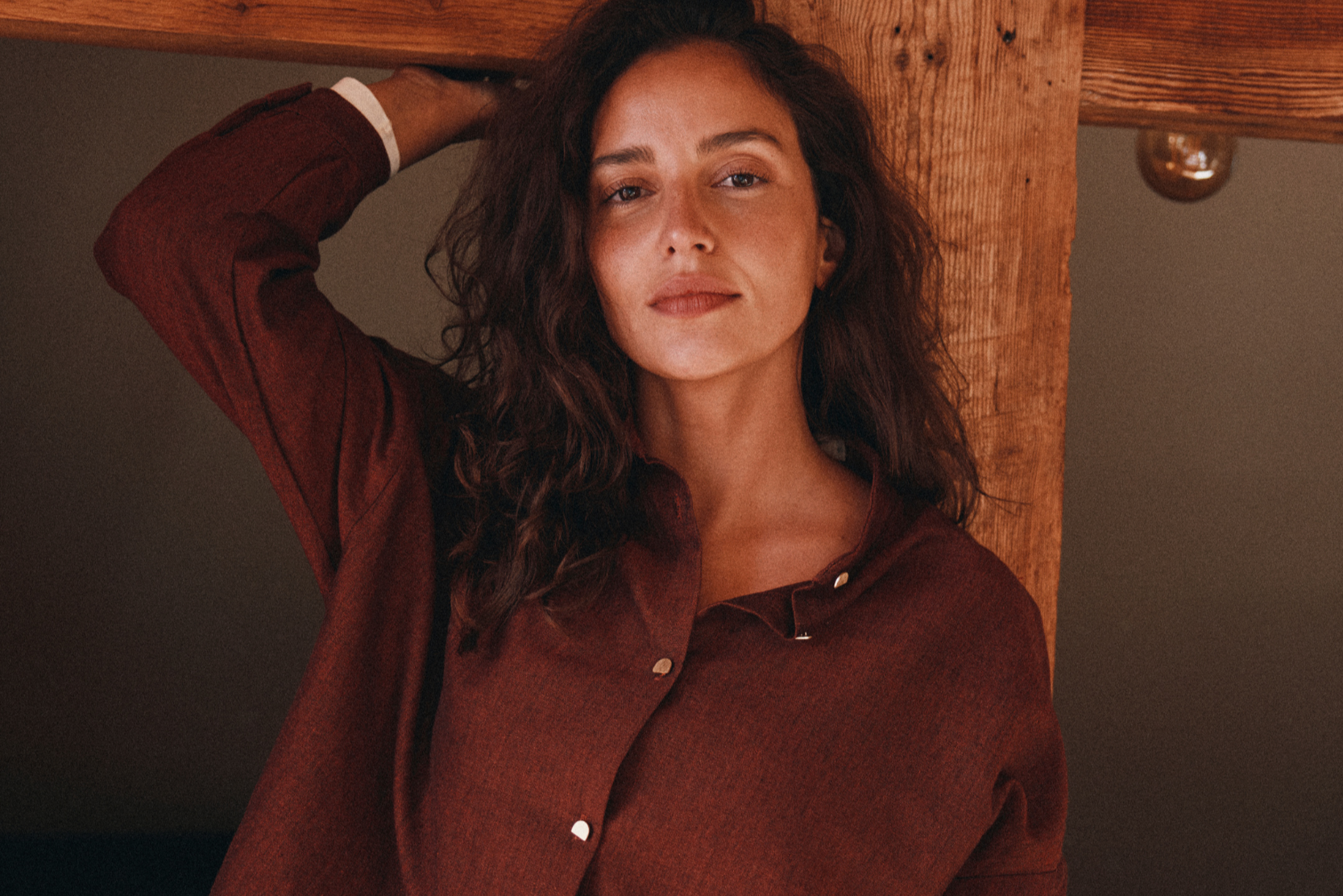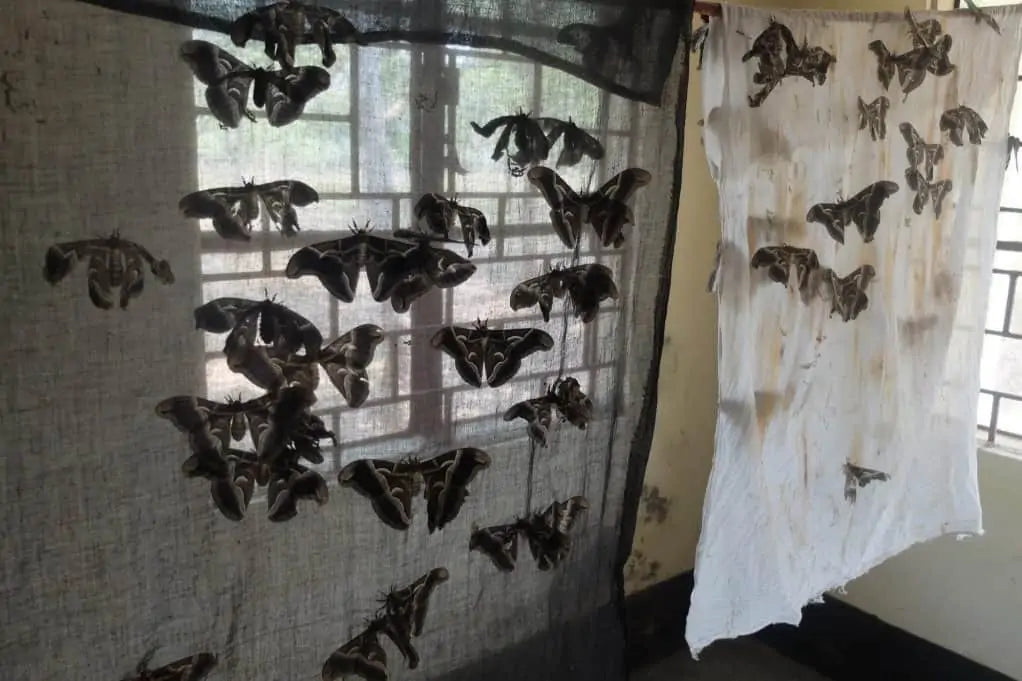ikat - the supreme discipline of weaving
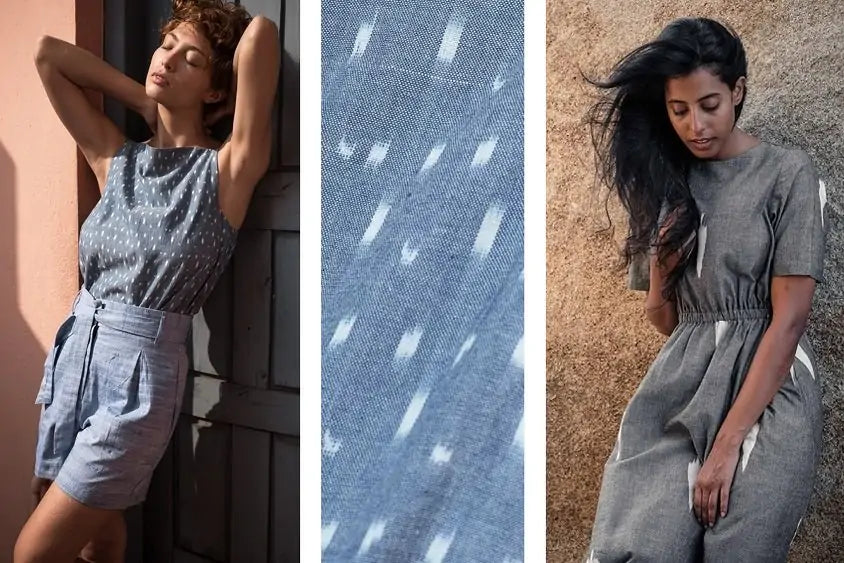
We have been searching all over India for it for over 3 years and finally found it practically on our doorstep – this very special woven fabric called Ikat.
Last October, during a visit to Mumbai, I (Jeanine) came across Vinita – the founder of the Indian label “Translate” – by chance and was immediately enthusiastic about her philosophy.
Translate's goal is to ensure the survival of Indian handicrafts through contemporary design concepts, with a clear focus on the technique of Ikat weaving.
As luck would have it, it quickly became clear that the weavers Translate works with live in Pochampally - a small village not far from our sewing workshop in Chittapur. Without hesitating, I headed straight there and was amazed.
Located in the state of Telangana, Pochampally has a population of barely more than 1,000 and each of them has a close connection to Ikat weaving. Pochampally has now even become the Indian synonym for Ikat, as a large proportion of the fabrics sold throughout India come from this small town.
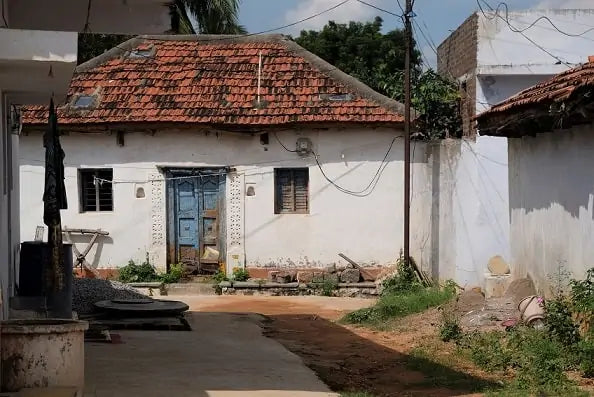

As soon as we arrived in Pochampally – Vinita’s colleague Nikita accompanied me on a little trip there – we were given a very warm welcome and immediately heard the familiar clatter of Indian handlooms.

I quickly learned that every single step of production takes place directly in Pochampally - from dyeing to weaving to finishing. The areas of the village are also clearly divided into houses where dyeing takes place, those where the yarn is put on the spindle and then of course those where weaving takes place.
In general, the workshops are integrated into the respective residential buildings and are usually located right next to the living rooms. This means that the work routes are short and the often very lengthy production steps can be easily integrated into everyday life.
But what is special about this technique and what does Ikat mean?
The term Ikat is derived from the Malay word “mengikat” and means something like “to bind” or “to wrap”. Unlike batik, the Ikat technique does not tie off an area, but instead the unwoven yarn.
I quickly learned that every single step of production takes place directly in Pochampally - from dyeing to weaving to finishing. The areas of the village are also clearly divided into houses where dyeing takes place, those where the yarn is put on the spindle and then of course those where weaving takes place.
In general, the workshops are integrated into the respective residential buildings and are usually located right next to the living rooms. This means that the work routes are short and the often very lengthy production steps can be easily integrated into everyday life.
But what is special about this technique and what does Ikat mean?
The term Ikat is derived from the Malay word “mengikat” and means something like “to bind” or “to wrap”. Unlike batik, the Ikat technique does not tie off an area, but instead the unwoven yarn.
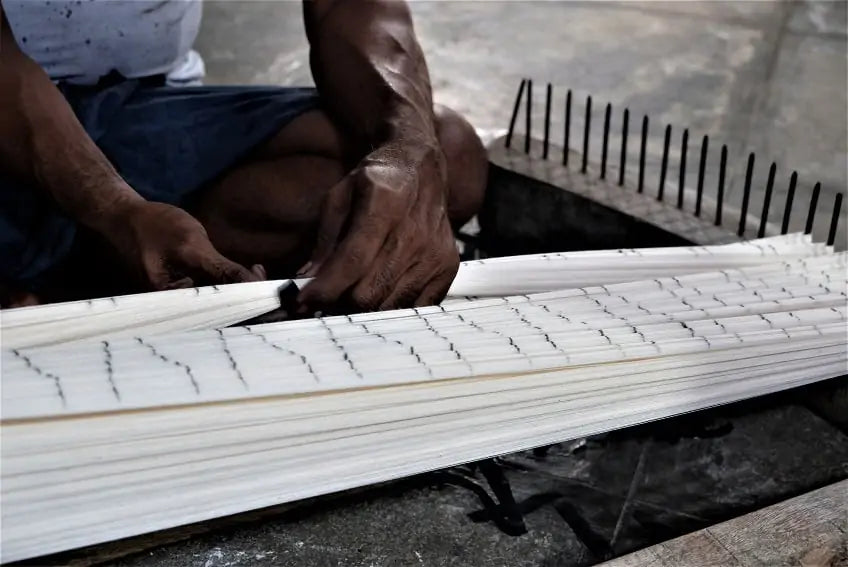
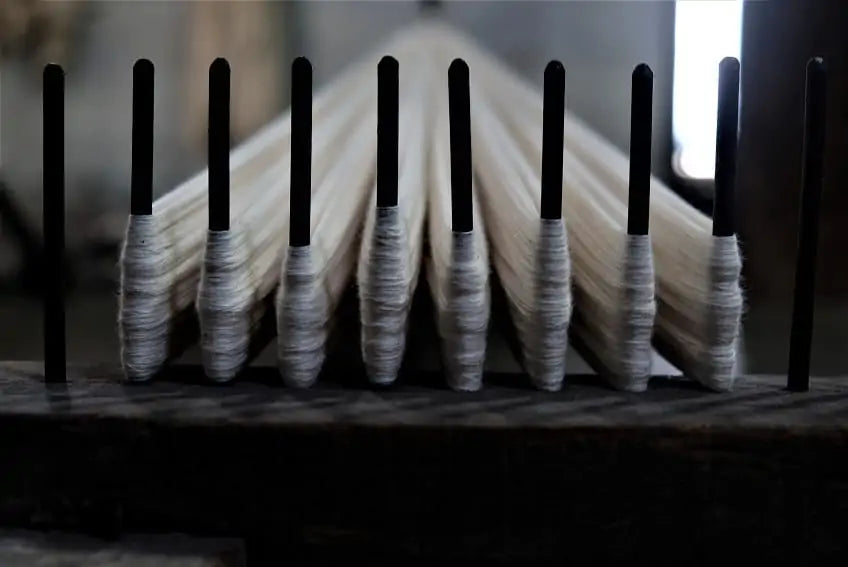
With a specific pattern in mind, the artisan ties off the areas of yarn that are to remain white during later dyeing.
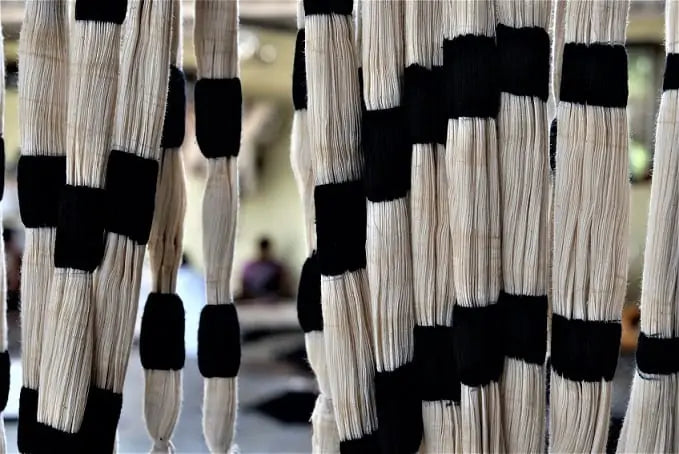
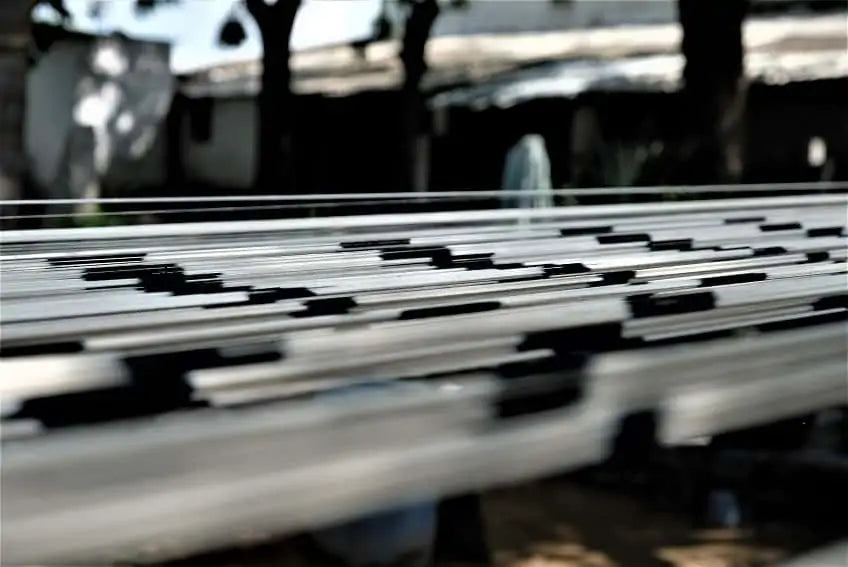
The yarns are then stretched out to dry in strips up to 50 meters long and then often tied again in further steps to be dyed with a second, third or even fourth color.
Once this process is complete, the yarns are wound onto the spindles in a very specific order and then woven by hand.
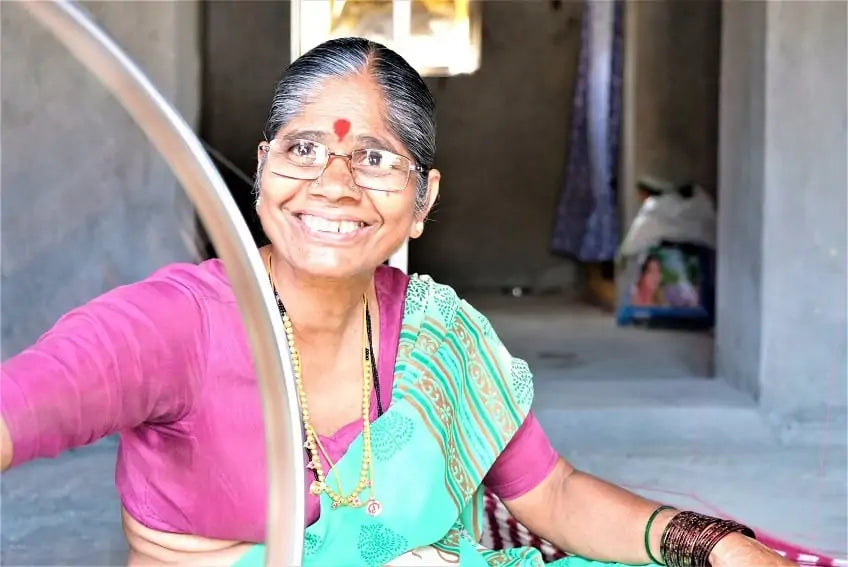
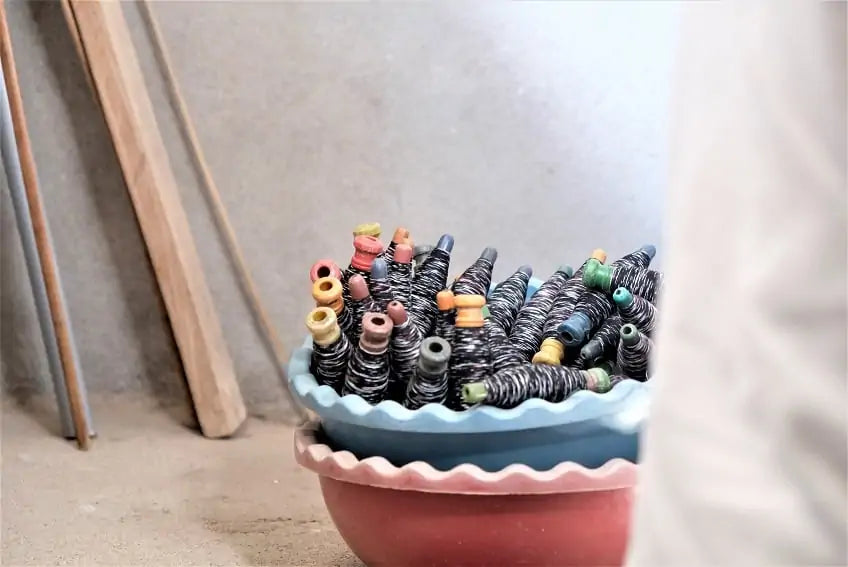
If even a small mistake is made here, the entire pattern is ruined, so the work requires the weaver to concentrate fully.
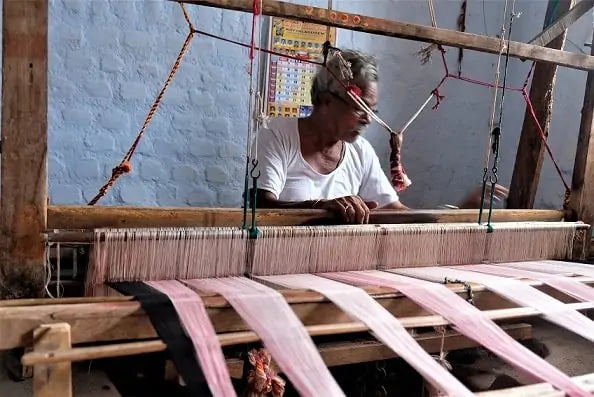
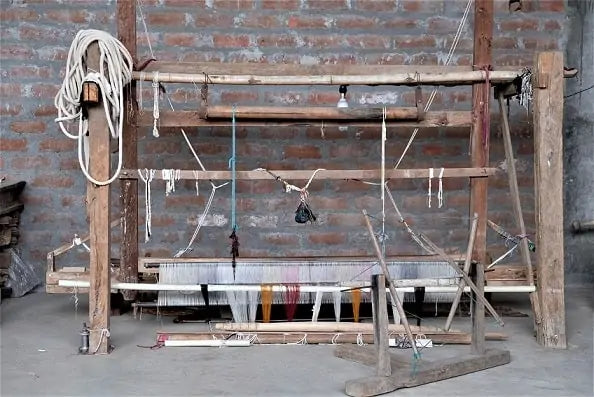
This very complex and filigree technique gives the Ikat fabrics a wonderfully light and shimmering appearance.
Fascinated by this technique and the knowledge of the weavers, I was immediately enthusiastic and now even happier that we have been able to include the fabrics in our range this season and hopefully in all the following seasons and thus contribute a small part to the preservation of this wonderful handicraft.
Now we are of course very curious to hear your feedback =)!

